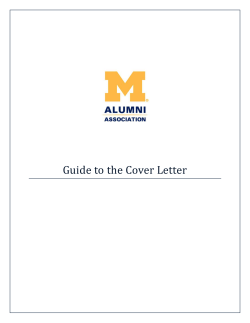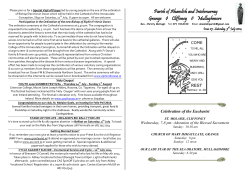
The following leaflets are also available and all of our
the Rosary is conducive to contemplation. It is highly adaptable to individual or group recital, and is ideally suited for family prayer. Christ is the only way to the Father (Jn. 14:411), and the ultimate example for the Christian. The Catholic Church has always taught this and nothing in its pastoral activity should obscure this teaching. The Church has taught, however, by the Holy Spirit and by the benefit of centuries of experience, that authentic devotion to the Blessed Virgin Mary has a great pastoral effectiveness and constitutes a force for renewing Christian life. Ultimately, Mary challenges us with the person and message of Jesus: "Do whatever he tells you." (Jn. 2:5) Fr. Kevin Beach The following leaflets are also available and all of our leaflets are written by Roman Catholic authors: An Invitation from the Rock. Can Human Reason Lead Us To Believe in the Existence of God? Praying the Rosary. Is the Story of Fatima for Today? Why Should I go to Mass on Sunday? What is the Catholic Church Anyway? What is the Holy Eucharist? What is the Sacrament of Penance? What is the Sacrament of Baptism? What happens to me when I Die? Who is the Pope? Approaching the Catholic Church for the first time. Internet email: catholic@catholicmissionleaflets.org Web Page: http://www.catholicmissionleaflets.org NOTE: If you would like to know more about the Roman Catholic Church, simply look up the one nearest you, in the Yellow Pages of any phone book, and enquire about the adult information courses that are available and offered without any obligation at all to the enquirer. You may photocopy and distribute this leaflet or log on to our site above and pick up a fresh copy for printing. Local Contact: Why Do Catholics Venerate the Blessed Virgin Mary? ".... when the appointed time came, God sent His Son, born of a woman... to enable us to be adopted... " (Ga[.4:45). The Catholic Church, taught by the Holy Spirit, honours this woman Mary, with filial affection and devotion as a most beloved mother (Lumen Gentium, S53). In the great Marian churches of the world, such as Notre Dame de Paris, and Our Lady of Guadalupe in Mexico City, the central act of worship is the Mass the Lord's supper, the bloodless reenactment of His sacrifice on Calvary. The focus of worship is the altar, cross and tabernacle. Christ alone is the centre of our faith. He is the one mediator between God and humanity. We are, however, a fallen race. God, in his goodness, has given us guides to take us to Jesus Christ, the light of the nations. Catholics, since the time of the Apostles, have found in Mary a sure guide. Moreover, the ationship between the believer and Mary is more than that of a pilgrim and a guide. The relationship is maternal. She is our Mother. This is the source of the richness of Marian devotion in the Church. Mary in the Plan of Salvation: CATHOLIC MISSION LEAFLETS P.O. Box 10, Ingleside, ON, K0C 1M0, “Committing herself wholeheartedly and impeded by no sin to God's saving will, (Mary) devoted herself totally ... to the person and work of her Son, under and with Him, serving the mystery of redemption... " (L.G. 56). John Paul II has noted Mary's exceptional pilgrimage of faith as a constant point of reference for the Church, for individuals and communities (Redemptoris Mater, 6). Mary was introduced into the mystery of Christ by the Annunciation. She was greeted by the Archangel Gabriel not by her name "Mary", but by the significant words "so highly favoured", which would be elaborated by her cousin Elizabeth, "Of all women you are the most blessed..." (Lk.1:2842). In the visitation to Elizabeth, we are made aware not only of Mary's favoured state before God, but also of her virtue of practical charity. Above all, believers are asked to grow in intimacy with the person of Jesus. During the years of Jesus' hidden life in the home at Nazareth, Mary's life was "hidden with Christ in God" (cf. Col. 3:3). The first human creature permitted to discover Christ was Mary; however, the finding of Jesus teaching in the temple (Lk. 2:4250) reveals that she did not always understand the mystery with whom she lived. She persevered only through faith. Through this faith, Mary is perfectly united with Jesus in his selfemptying, saving act on the Cross (R.M. 6, 8, 12, 17, 18). The Cross, the instrument of our redemption, is also the place of Christ's donation of his mother to his believers. In addressing the beloved apostle John, the Lord speaks to all Christians: "Behold, your mother!" (Jn. 19:27). Each of us is invited, like John, "to take her to his own home." The Blessed Virgin Mary and the Church: In a unique way, Mary cooperated by her obedience, faith, hope and burning charity in restoring supernatural life to souls. For this reason, she is a mother to us in the order of grace. Catholics, in seeking to conquer sin and increase in holiness, turn to Mary who shines forth to the Church as the model of virtues. She displays that motherly love which all, who join in the Church's mission to humanity, should embrace and display (L.G. 60 ,61,65). Mary is intimately linked to the Church's mission. Just as she was present at the Incarnation, the coming of Jesus, so she was present at the birth of the Church at Pentecost (Acts 1:14). Her maternal care continued after the Resurrection as she prayed with the disciples in the upper room, the Cenacle. Catholics believe that, after a period of time among the disciples, Mary was assumed body and soul into heaven. From there, she continues her mission of prayer and bringing people to salvation in Jesus. Should we then be surprised that Mary has appeared to individuals throughout the centuries, even to our own day? Although much Catholic teaching has developed concerning Mary, it has been mixed with the piety of the ordinary faithful. In the life of the Church, in the conservation and nourishing of its living tradition, often the law of prayer is ahead of the law of belief. That is to say, the sense of the faithful as to what is true often precedes formal teaching. For example, for several centuries, feasts celebrated Mary's sinless conception and glorious assumption, but it was only within the last 150 years that they were defined as dogmas of the faith. Only the bishops in communion with the Pope (the "magesterium") can teach authoritatively the teachings of Christ. Abuses and exaggerated practices surrounding veneration of the Blessed Virgin have been corrected, in the past, by the Church's teaching office. It has been, however, its chief aim to promote true devotion to Mary. The Fathers of the Second Vatican Council (196265) gave an important thrust to understanding the Virgin's role within the Church. Rather than issue a separate document on Mary, the Council Fathers incorporated their teaching on her within the constitution on the Church, Lumen Gentium. As Mary was intimately linked to the earthly ministry of her Son, so she is intimately linked to the Church which carries on her Son's ministry through time until He returns again. Veneration of the Blessed Virgin Mary in the Church: The veneration given to Mary differs essentially from that given to God Father, Son and Holy Spirit. The Church regulates the Marian forms of piety to ensure that the Triune God is known, loved and glorified (L.G. 66) . Official Marian devotion forms a very noble part of the whole sphere of sacred worship which mixes wisdom and religion and which is, therefore, the primary task of believers (Paul VI, Marialis Cultis, Introduction). In the liturgical calendar of the Church, one can share and be nourished by Our Lady's journey of faith. The feast of the Immaculate Conception (December 8th), and the period of Advent, bring the faithful to think about the love with which the Virgin Mother awaited her Son. They are invited to take her as a model and prepare themselves to meet the Saviour who is to come. The Solemnity of Mary, the holy Mother of God, on January 1st, commemorates the part played by Mary in the history of salvation. It occurs within the octave of Christmas and is a fitting occasion for adoring the new born Prince of Peace. Pope Paul VI, highlighting this gift of peace, instituted January 1st as World Day of Peace. March 25th is the Solemnity of the Incarnation of the Word (Annunciation of the Lord). It is a joint feast of Christ and the Blessed Virgin which marks the beginning of redemption and the union of the divine nature and human nature in the one person of Jesus. It celebrates the generous "fiat" of Our Lady to God "let what you have said be done to me" (Lk. 1:38). It is a unique consent in the history of salvation. The Solemnity of the Assumption of Mary into Heaven is celebrated on August 15th. It sets before Christians, indeed before, all of humanity, their final hope which is their glorification through the saving act of Jesus Christ. In addition to the four Solemnities, there are a number of other celebrations in the calendar which commemorate other events in which Mary was closely associated with her Son the Nativity of Our Lady (September .8th), the Visitation (May 31st), Our Lady of Sorrows (September 15th), Presentation of the Lord (February 2nd). There are other Marian feasts which were associated with local churches and which have taken on universal importance, such as Our Lady of Lourdes (February 11th). Some of the most carefully researched miracles in the history of Christianity have occurred at the Grotto of Lourdes in France. There have been special interventions of Mary in local churches. She appeared at Fatima in Portugal in 1917 with a message of prayer and reparation for the salvation of souls. In addition to this Gospel message, the Virgin prophesied certain events in history which, some suggest, included the recent collapse of Communism. In Mexico in 1531, Our Lady of Guadalupe appeared to an Aztec peasant, Juan Diego, at which time she declared herself as "your merciful mother; to you and all inhabitants of the earth". As proof of her visit and concern, she left her image on the cloak, the tilma, of Juan Diego which is still displayed more than four hundred years later in the Basilica near Mexico City. More importantly, her appearance was the impetus to the evangelization of Mexico. Within a few years, eight million Indians were baptized. Mary brings us to her Son. It is the acid test of proper devotion to Our Lady. Intimacy with Jesus can only be assured through sincere and persevering prayer. Two Marian prayers which have received continuous Papal support are the Angelus and the Rosary(M.C. 4 055). The Angelus commends itself on several points: its simple structure, biblical character, historical link to the prayer for peace and safety, its rhythm which sanctifies different moments of the day, and its remembrance of the life, death and resurrection of Jesus. The Rosary has been called "the compendium of the entire Gospel". It draws from the Gospel the mysteries and its prayers. The Rosary considers in succession the principal salvific events accomplished in Christ. In addition to elements of praise and petition, the quiet rhythm and lingering pace of
© Copyright 2025













